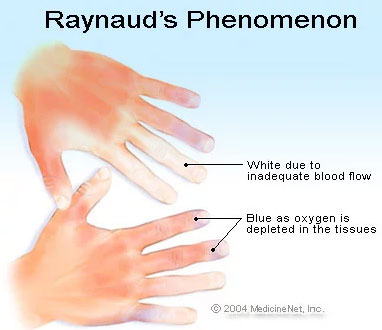Our Top 5 Tips for Raynaud's
Symptoms —
Raynaud’s Syndrome occurs in approximately 38% of patients with Sjögren’s.
Raynaud’s Syndrome (sometimes called Raynaud’s phenomenon) is defined as repeated episodes of color changes in the fingers and/or toes with exposure to cold temperatures or during episodes of emotional stress. The color changes are due to a spasm of the blood vessels that feed the fingers and toes. The digits typically turn very white, then can take on a bluish color with prolonged exposure to the cold, and finally can turn very red as blood flow resumes.

Sjogren's Foundation's Top 5 Tips to control your Raynaud's Syndrome:
- If you have access to water when a flare starts, run warm water over your fingers and toes until skin color returns to normal.
- Do not smoke — this constricts the blood vessels that feed the hands and feet.
- Moisturize your hands and feet every day to prevent your skin from cracking.
- When your hands or feet start to feel cold, wiggle your fingers and toes, move your arms and legs around to get blood flowing, or put your hands under your armpits to warm them up.
- Talk to your doctor about your symptoms. Several medications can be used to help the vessels stay dilated, including a class of blood pressure medications called calcium channel blockers. Some medicines, such as beta blockers used for high blood pressure, may make Raynaud’s worse.
These Tips are from the Sjögren's Foundation Patient Education Sheet: Raynaud's Syndrome.


